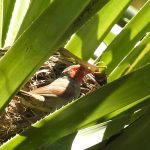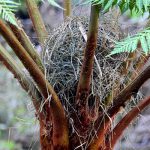DOME NESTS
Engineering Marvels in the Australian Wild
Dome nests are remarkable constructions, crafted by a variety of Australian birds. These intricate shelters play a vital role in the survival of many species, offering support, protection, and a safe environment for raising young. Let’s take a closer look at how these nests are built, why birds choose them, and the benefits they provide.
How Dome Nests Are Constructed
The building of a dome nest is a feat of natural engineering, blending instinct and available materials.
- Materials Used: Birds gather grasses, twigs, leaves, bark, spider silk, and sometimes even feathers. The materials are chosen for flexibility, insulation, and strength.
- Method: Construction often begins with a foundation platform. The dome is then built up and arched over, using beaks and sometimes feet to weave, tuck, and press the materials into a sturdy, weather-resistant form.
- Structure: The end result is a covered, sometimes spherical or oval nest with a small entrance—usually on the side or near the base—granting access only to the inhabitants.
Imagine the tactile sensation of layered grasses, woven tightly, with the earthy aroma of leaf litter merging with the fresh scent of morning dew during the building process.
Why Birds Build Dome Nests
Dome nests are more than just a place to lay eggs—they are a sophisticated adaptation to environmental challenges.
- Protection: The covered structure shields eggs and chicks from rain, harsh sunlight, and temperature extremes. It also helps conceal them from predators by camouflaging with surrounding vegetation.
- Security: With only a small entrance, dome nests make it difficult for larger predators and parasites to gain access.
- Microclimate Control: The enclosed design helps regulate temperature and humidity, providing a stable environment for developing chicks even in fluctuating weather conditions.
Picture a bundle of chicks nestled warmly within the soothing darkness of a dome nest, safe from the midday heat or the chill of an early morning breeze.
Benefits of Dome Nests
Building a dome nest confers several key advantages:
| Benefit | Description |
|---|---|
| Predator Avoidance | The dome shape and positioning make nests harder to spot and reach by predators. |
| Weather Protection | Domes shield against wind, rain, intense sun, and cold, promoting chick survival. |
| Energy Efficiency | The natural insulation reduces energy chicks spend on maintaining body temperature. |
| Camouflage | Materials blend into the surroundings, reducing visibility to enemies. |
| Longevity | Well-built dome nests often withstand multiple breeding seasons and repeated use. |
Conservation Insight
The remarkable complexity of dome nests highlights the intricate relationship between birds and their habitats. Protecting these environments is crucial—not only for the birds that build these marvels but also for the broader ecosystem that depends on such biodiversity. Human impact on habitats through deforestation and climate change can threaten the continued existence of these extraordinary natural shelters.
By appreciating and preserving the spaces where dome nests are found, we help ensure the survival of species that rely on this ancient but ever-effective architectural design.
Dome nests represent some of the most innovative and adaptive nesting strategies among Australia’s birdlife, offering lessons in resilience, resourcefulness, and the importance of protecting natural habitats for generations to come.


